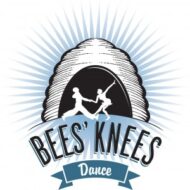CLASSES ARE COMING BACK SOON!
Fall 2023 – Stay tuned for updates!
Swing dancing is joyful, free spirited and infectious! Our classes include both social and solo styles of the 1920s to the 1950s though no partner is required to begin dancing. We rotate during the partnered classes so that you’ll have a chance to meet and dance with many different people and experiment within a playful lead/follow connection.
LINDY HOP
Fall in love with Lindy Hop, the original dance of the swing era! Danced in both 6- and 8-count sequences, Lindy Hop evolved in the 1920’s and dominated dance halls throughout the Great Depression until World War II. It is an unabashedly joyful dance, with a solid, flowing style that closely reflects its music — from the late 20’s hot Jazz to the early 40’s Big Bands. Sometimes known as the Jitterbug, this expressive dance evolved along with the new swing music, based on earlier dances such as the Charleston and the Black Bottom, by the African American community in Harlem.
The name Lindy Hop was inspired by Charles Lindbergh’s flight to Paris in 1927, when the newspaper headline read: “LINDY HOPS THE ATLANTIC”.
CHARLESTON
A precursor of Lindy Hop and often danced interchangeably, Charleston has enjoyed a recent resurgence thanks to the popularity of Roaring 20s period films such as Baz Luhrmann’s The Great Gatsby. This iconic dance style was the tops with the rebellious Flappers and represented the uninhibited enthusiasm of a new generation. This worldwide dance craze was so scandalous and exuberant, it was banned from many reputable dance halls in the 1920s. Naturally, this makes the dance even more appealing nowadays with Charleston enjoyed widely in both partnered and solo dancing.
SOLO JAZZ
Our Authentic Vintage Jazz programs take a step back in time to the roots of solo dance. Rich with storied history, these solo styles are very much a part of Lindy Hop culture, and of great benefit to your partnered dancing. Dive into fascinating rhythms and free spirited movements boasting Google-worthy names such as Snake Hips, Spank the Baby, and the Shirley Temple.
With a focus on steps and rhythms from the Swing Era, these classes will include instruction in classic mob choreographies such as The Shim Sham.
